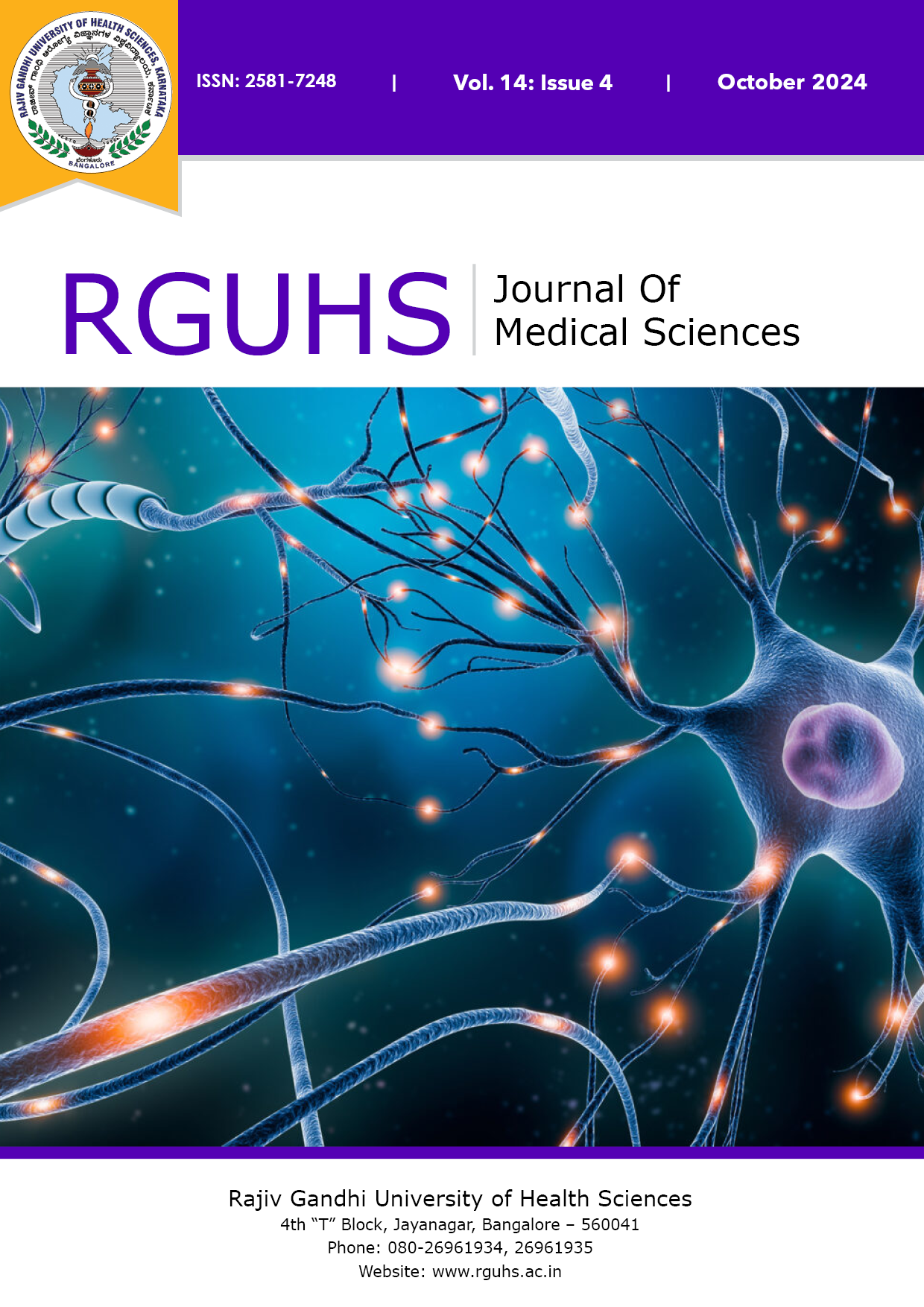
RGUHS Nat. J. Pub. Heal. Sci Vol: 15 Issue: 1 eISSN: pISSN
Dear Authors,
We invite you to watch this comprehensive video guide on the process of submitting your article online. This video will provide you with step-by-step instructions to ensure a smooth and successful submission.
Thank you for your attention and cooperation.
* Chandrashekar R Dhulappanavar , **Sangram Biradar
* Post-graduate, ** Associate Professor Department of Medicine, Basaveshwar Hospital, Gulbarga, Karnataka
Corresponding author:
Dr S.B. Biradar 14, Lahoti Enclave Station Road Gulbarga 585 103 drsangramb@yahoo.com

Abstract
Background and objectives: Astudy was undertaken with the aim of knowing the occurrence of microalbuminuria in patients with Type 2 Diabetes mellitus (T2DM) and to note the association with the duration of diabetes since its diagnosis, and also with macrovascular and microvascular complications of DM. As diabetic nephropathy is a dreaded complication of DM, it has to be detected in the early stages (incipient nephropathy) by demonstrating presence of microalbuminuria.
Methods: The study was carried out at Basaveshwar Teaching Hospital, Gulbarga, Karnataka, from January 2012 to September 2013. A total of 100 randomly selected diabetic patients satisfying the inclusion criteria were included in the study. These patients were evaluated in detail along with testing for presence of microalbuminuria using dipsticks.
Results: There was an overall occurence of microalbumiinuria in 42% of patients. Microalbuminuria showed a direct relationship with increasing age (p<0.01) and increasing duration of diabetes since its diagnosis. An HbA1c level about 7% was associated with 50% or higher incidence of microalbuminuria 2 (p<0.001). Patients with a body mass index of greater than 25 kg/m showed a significant increase in the incidence of microalbuminuria (p<0.05). The incidence of microalbuminuria was significantly associated with the presence of retinopathy (p<0.01), peripheral neuropathy (p<0.001), ischaemic heart disease (p<0.01) and hypertension (p<0.001). Microalbuminuria showed an inverse association with HDLcholesterol (p<0.05).
Conclusion: The occurrence of microalbuminuria in T2DM patients was quite high. During evaluation of diabetic patients, the occurrence of microalbuminuria and its correlation with various complications of diabetes should be kept in mind
Keywords
Downloads
-
1FullTextPDF
Article
none
Supporting File
References
none